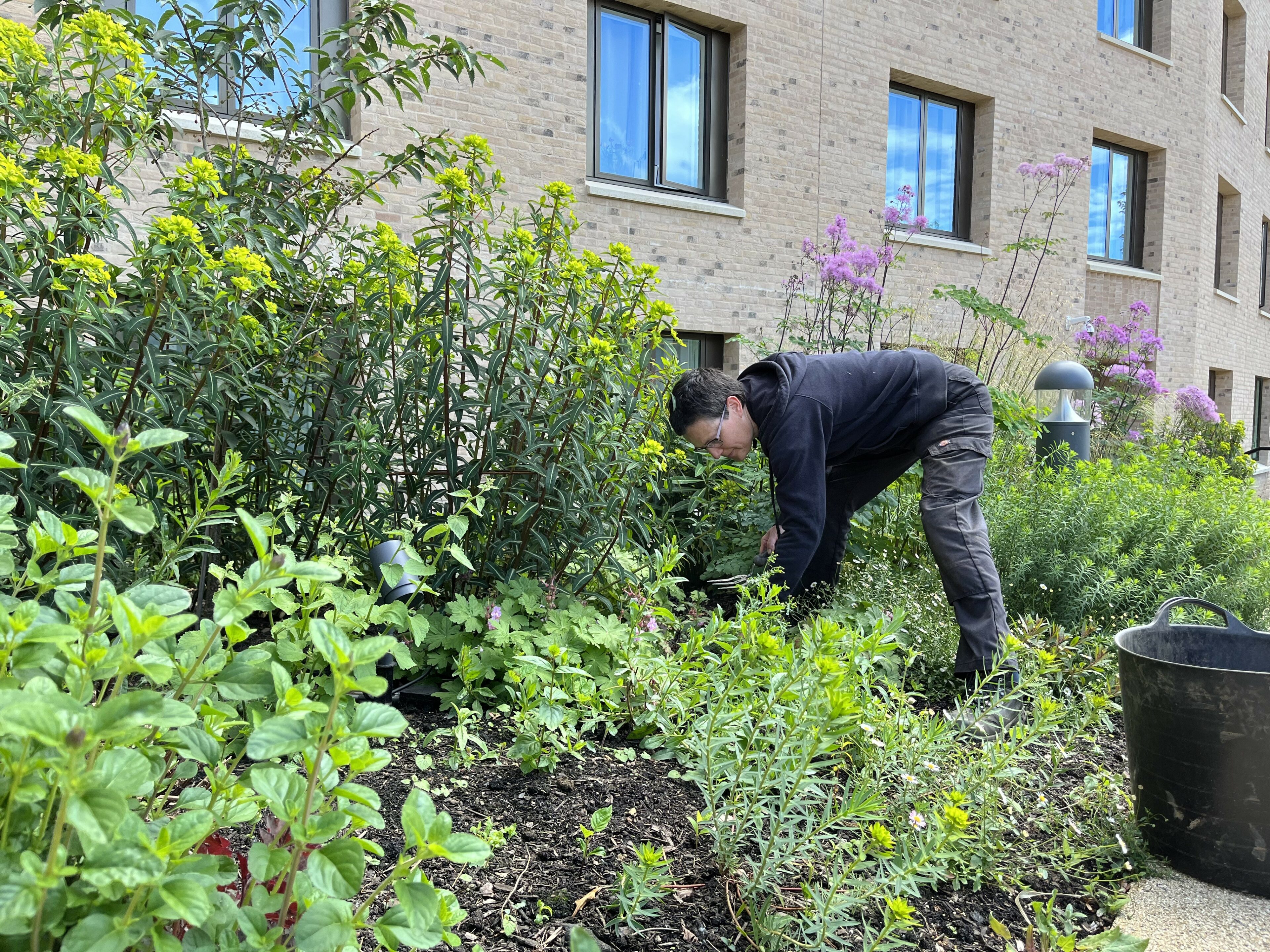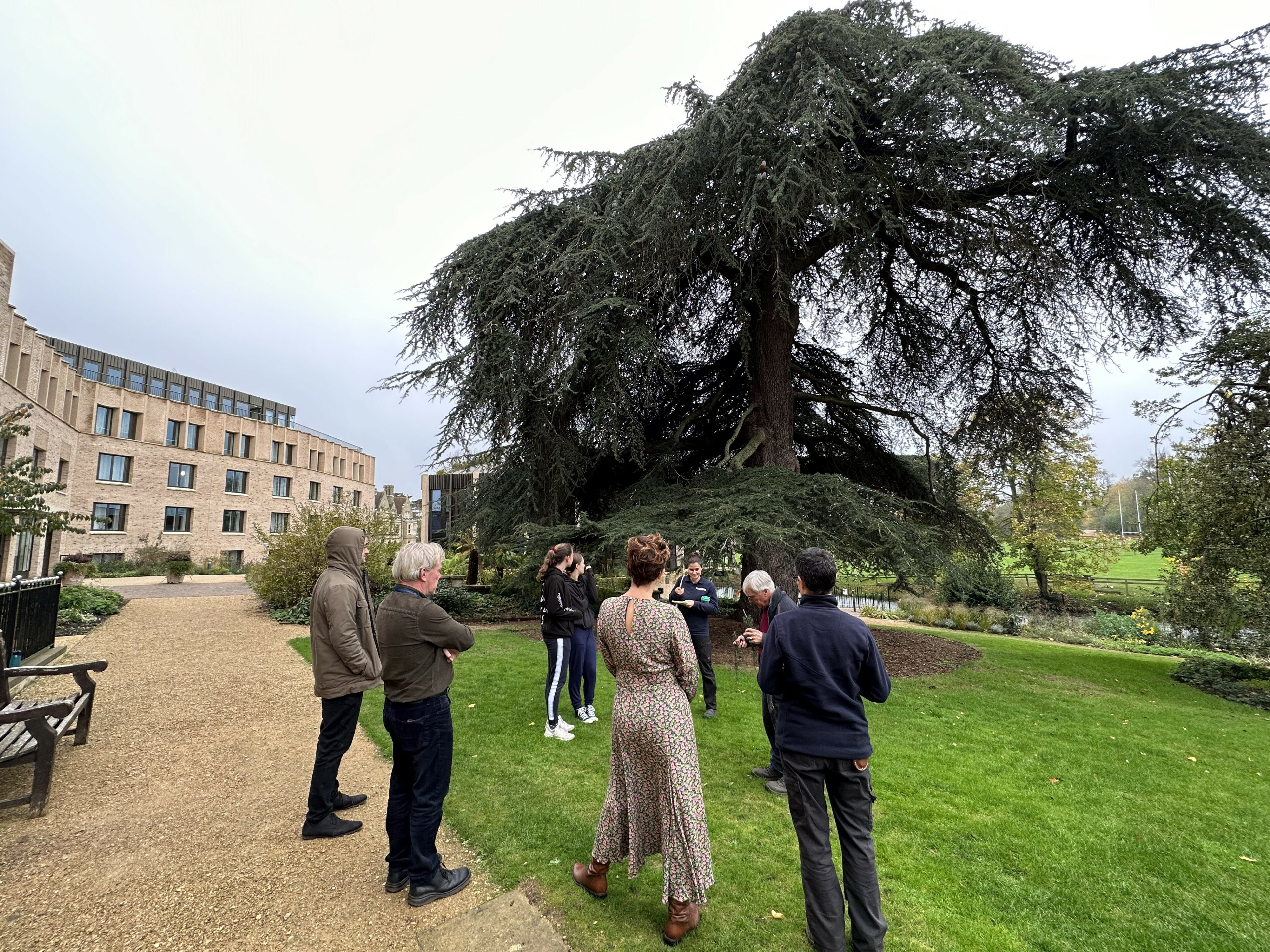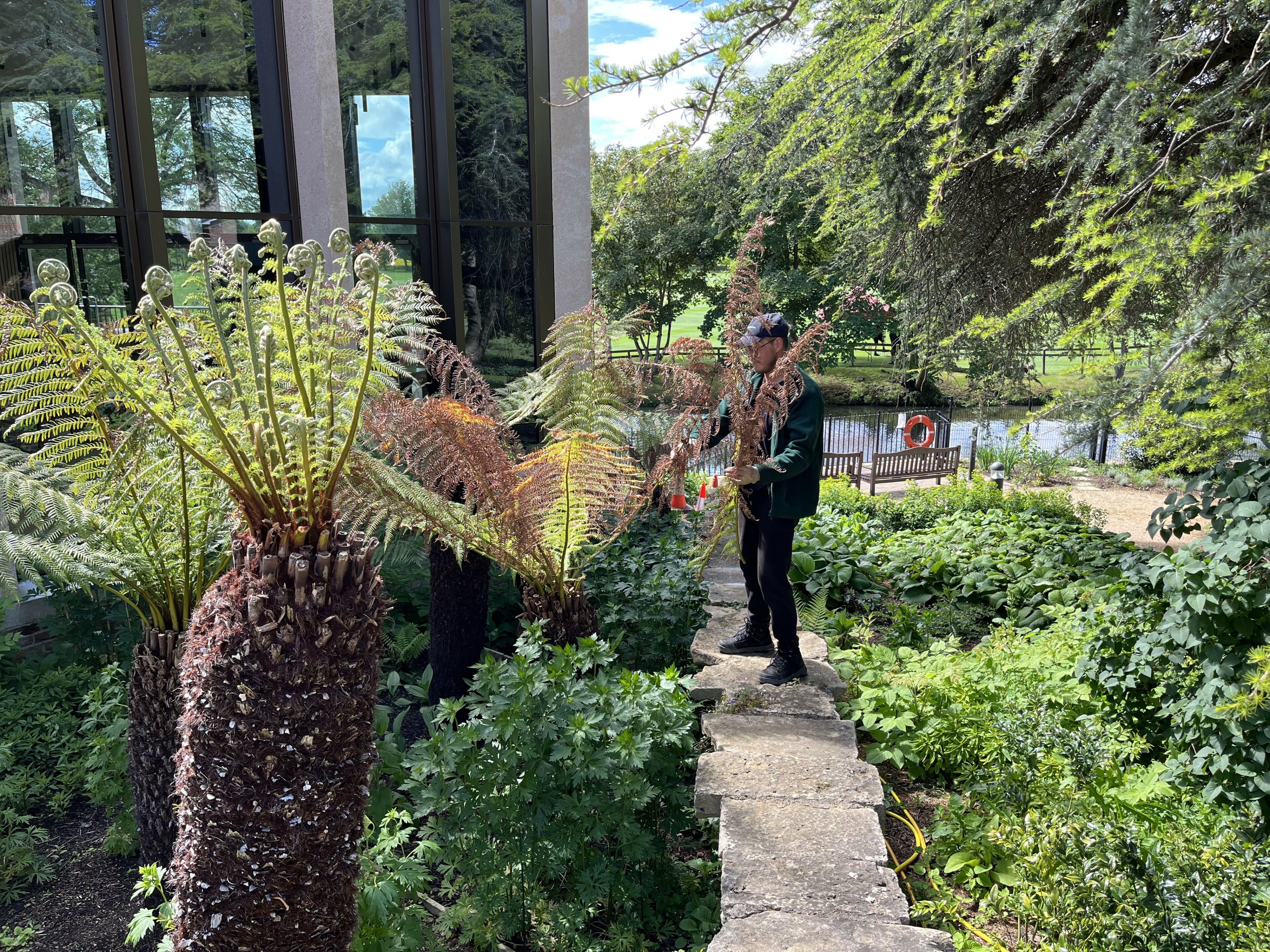
We are developing the area around the Pavilion into four distinct growing environments.
Under the cedar tree
The area below the mature cedar tree, alongside the Pavilion in Hall Garden, is in very dry shade, bounded by a gravel pathway that links the riverside walk with the upper pathway and on the other side a stone wall that predates our new development.
These two existing features provide a natural border running down the slope towards the river. We plan to introduce a bark pathway that will link the gravel walkway and lodge pathway.
The planting in the existing shade border includes shade and drought-tolerant plants.
Some of the plants surround the retained lilac tree (syringa vulgaris) which has historic significance and may have been planted by Dr John Sibthorpe (The Centenary History of St Hilda's College by Margaret E Rayner, published by Lindsay Ross Publishing Ltd on behalf of St Hilda's College, 1993).
The planting is blended with ground covering and perennial plants towards the front of the pathway, which will provide colour and interest throughout much of the year. The plant material will not require irrigation after the establishment period and will be self-sustaining.

The Dell
Between a stone wall and the Pavilion lies the Dell.
Here, the ground levels fall more steeply towards the river. Shade is created by the Pavilion building and the canopy of the cedar tree with more shelter from the retained stone wall.
The dell is an area of uncompetitive shade, and it offers a rare opportunity to grow a range of interesting and unusual plants in an exceptionally sheltered space.
We are creating interesting views of the plants from the Pavilion meeting rooms.
Tree ferns (Dicksonia antarctica) and umbrella trees (Schefflera delavayi) can be cultivated successfully in this environment. They have strong architectural leaf form and it will be possible to see some of them from above from the Pavilion meeting room.
We propose a range of shade-loving underplanting to provide further leaf colour form and texture as well as summer flower colour.

Between the road and the Pavilion
In contrast to the gardens under the cedar tree and between the stone wall and Pavilion, the area between the road and the Pavilion receives more light, and for part of the day, direct sunlight.
Our plant selection reflects this and is designed to provide a very long season of flower colour and interest.
The plants will be woven together to blend the forms and texture rather than being in individual blocks.
The linking architectural plants are the Schefflera and a specimen Heptacodium jasminoiodes. Both provide good architectural form, late summer flower colour and excellent autumn foliage colour.
The underplanting comprises a mix of colourful, long-flowering summer perennials that go on providing colour and interest well into the autumn. The Crinum will provide strong leaf form during the summer months.
As the bed narrows towards the south it is fronted by an evergreen Euphorbia of strong habit, and in front of that, the silver-leaved sub-shrub Convolvulus cneorum, which also will provide structure and colour all year round.
The rest of the border contains Althaea cannabina to provide ethereal height, colour, and form. The grassy forms of the Stipa give structure and leaf colour. The Dierama (angel’s fishing rods) provide graceful mid-summer flower colour but also strong but light form.
The remaining plant material produces a very long season of flower colour.

Through the gate
As visitors approach the iron gates, the nearby tree is a Kolrueteria paniculata (Pride of India). This will provide a focal point as the gates are approached with its good form and several periods of interest during the growing season.
The trees in the borders to the west of the accommodation building are Prunus ‘Shosar’ which is early flowering and has a good habit for this area. It gives continuity to the cherry theme in the Lodge Area.
Within the borders, the plants are principally perennials intended to complement the borders on the west side of the roadway, with some replications such as Dierama to unify the area.
A slightly different range of plant material has been selected, as growing conditions will be different with varying levels of daylight and shelter. The planting is also designed to provide visual protection for people occupying the ground floor rooms while still allowing light in.
Culinary herbs have been introduced near the gate, which is convenient for the kitchens.
